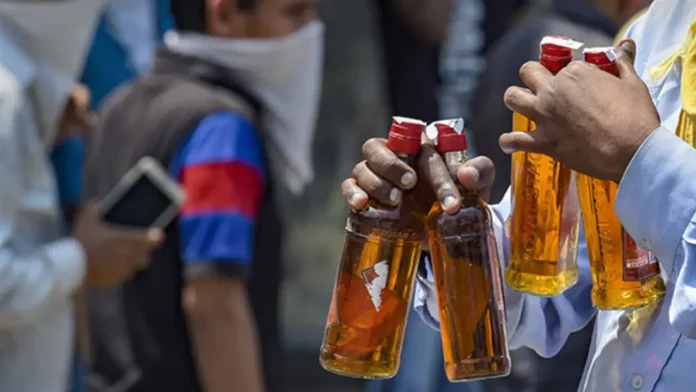The alcohol-beverage industry is dynamic and interesting because of the booming drinking culture and novel cocktails. As new drink categories and innovations are spicing up the market, the alcohol industry is shaking things up at restaurants and hotels.
People today are more interested in experiences than just regular basic drinks, thanks to the F&B industry’s ongoing changes. What is novel is how many alcoholic and non-alcoholic beverages are becoming increasingly similar in taste as more firms launch goods on the market. Craft beer has forced customers to reconsider their current brand and category of preference. Even if the food and beverages are excellent, the overall dining experience is what ultimately matters and spreads word of mouth.
In order to achieve the greatest impact, offering the optimal portion size at the right price is now crucial. Pricing obviously plays a significant influence in this. For customers to visit the venues, all of the trends stated above must become hot topics. According to Gautam Khanna, Director of Food & Beverage at Pullman New Delhi Aerocity, “if your F&B venue lacks a narrative, the location is not maximizing its potential.” Let’s consider some of the other factors driving change in the beverage industry.
Profits are key for Alcohol-Beverage industry
The food and beverage industry, particularly the bars, restaurants, and hotels, is always changing, but one of the main catalysts for this change is the alcohol brands. Sales are anticipated to increase in the upcoming years’ thanks to premium goods and sophisticated flavors. Today’s audiences are interested in cocktails, single malts, IMFL, and other foreign brands of whisky. Today’s audiences enjoy gin and scotch, and their consumption has grown over time.

The Finch’s CEO and Director, Sandip Katiyar, reports, “We have raised 15% of our income from alcohol sales in the F&B market, and finger foods and side dishes have also developed into a highly curated menu at many hotels and restaurants, including ours.” Anyone today would prefer to visit a location with a bar and drinks; as a result, the city’s most upscale restaurants provide their customers with a special bar menu. Drinks are popular; our mixologists’ newer, trendier creations keep customers interested, whether it’s at our Wednesday Divas night, where we teach newbies how to make cocktails, or with our themed drinks for Halloween and other special occasions.
High on Trends
To boost sales, a lot of beverage manufacturers are increasing their product portfolios. There is a trend taking place globally where many consumers are requesting alcoholic beverages with fewer calories and higher-quality ingredients, demonstrating that they are aware of their options. Taste and unique flavor profiles are the deciding factors in the culture of guilt-free drinking, which has already begun and is expanding at an accelerated rate. The non-alcoholic beverage market had a 33% increase in sales to $331 million; by 2023, non-alcoholic spirits are predicted to reach 35%.
According to Arijit Bose, Co-Founder of CounterTop, “The Indian craft spirits industry is seeing a massive spike with big brands investing in them, which means the experiments paid off and the business environment for homegrown craft spirits is getting lucrative and will see a lot more enthusiastic entrepreneurs jumping in.” In order to serve top-shelf spirits and cocktails, bars in Goa, Mumbai, and Delhi now have large, high-quality clear ice cubes that are transparent and clear.
Fitness Culture
Even though alcoholic beverages are not typically marketed as “healthy,” consumers nevertheless search for “better-for-you” substitutes to reduce their sugar intake. Hard seltzer has a crisp lightness and is the ideal “guilt-free” beverage because it has only 110 calories for a whole bottle and has the same amount of alcohol as beer but little to no additional carbs or sweets. According to Anish Reddy, CEO and Founder of Pursue Hard Seltzer, “Hard Seltzers, in a way, are a bridge between beer, wine, and cocktails, keeping in mind the consumer’s health-conscious sentiment.
With the traditional flavors of lemon and peach currently taking over the shelves, iced tea with alcohol is a rapidly expanding market. With No Label, we launched mead, a relatively new type of alcoholic beverage, according to Harsha Malik, Head of Marketing at Bored Beverages. Honey is fermented to create the No Label Mead Original, which is then flavored with orange peels. In contrast to beer, it is free of glycerine and gluten, making it a popular beverage among young people. Consumers can choose from a wide variety of cutting-edge and healthy options on the market, including gluten-free, vegan, lactose-free, and low-calorie drinks.
Needless to say, it will be interesting to see more non-alcoholic beverages taking up shares in the industry. Overall, India seems to receive a boost from homegrown and local businesses that are now pushing their products pan India. Thus, making cause for the Make in India campaign and helping create more flavors and opportunities at a national level. The beverage industry surely is set to receive a number of twists and opportunities in the coming years.





